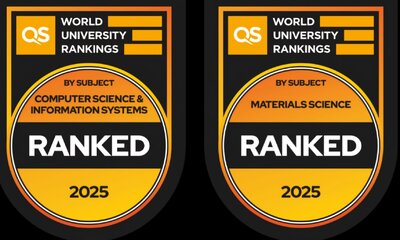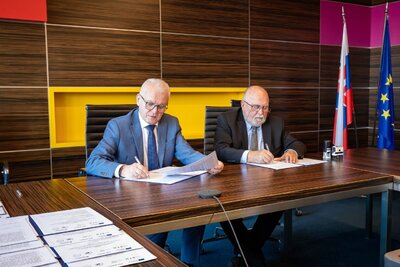PROJECT MANAGEMENT 101: PLANNING
Doc. Nataliia Yehorchenkova, M.Sc., PhD, Dr.Sc.
SPECTRA Centre of Excellence EU
Institute of Management
Slovak University of Technology in Bratislava
nataliia.yehorchenkova@stuba.sk
Doc. Oleksii Yehorchenkov, M.Sc., PhD, Dr.Sc.
SPECTRA Centre of Excellence EU
Institute of Management
Slovak University of Technology in Bratislava
oleksii.yehorchenkov@stuba.sk
Abstract:
The study manual was created to help students understand project management and address common questions and ambiguities regarding definitions, methods, and tools. It is intended for those who are new to the field of project management and MS Project and wish to understand what a project is and how to plan it. The growing demand for project management in business, administration, and regional development makes these skills essential for competitiveness. Project management now supports the efficient use of resources, timely implementation of infrastructure projects, and the improvement of living conditions in regions, while integrating various sectors and stakeholders for sustainable development.
DOI: 10.61544/HZKU1054![]()
Literatúra:
1. Project Management Institute. (2021). A guide to the Project Management Body of Knowledge (PMBOK guide) (7th ed.). Project Management Institute.
2. Association for Project Management. (n.d.). Glossary of terms. https://www.apm.org.uk/resources/glossary/#p
3. Project Management Association of Japan. (n.d.). P2M Bibelot. https://www.pmaj.or.jp/ENG/p2m/p2m_guide/P2M_Bibelot(All)_R3.pdf
4. European Commission. (n.d.). PM² publications and resources. https://pm2.europa.eu/pm2-publications-and-resources_en
5. Doran, G. T. (1981). There’s a S.M.A.R.T. way to write management’s goals and objectives. Management Review, 70, 35-36.
6. Lim, C. S., & Mohamed, M. Z. (1999). Criteria of project success: An exploratory re-examination. International Journal of Project Management, 17(4), 243-248.
7. Project management triangle. https://en.wikipedia.org/wiki/Project_management_triangle
8. Toor, S., & Ogunlana, S. O. (2010). Understanding the meaning of project success. International Journal of Project Management, 28(4), 256-265. https://doi.org/10.1016/j.ijproman.2009.11.002
9. Shojaie, A. A., Shadalooie, M., Khalili-Damghani, K., & Pakzad, M. R. (2016). Development of a conceptual model of project management information systems for investigating its effective factors impacting the success of project using structural equation model. International Journal of Life Science & Pharma Research, Special Issue (1), 17-29.
10. Bodicha, H. H. (2015). How to measure the effect of project risk management process on the success of construction projects: A critical literature review. The International Journal of Business & Management, 3(12), 99-112.
11. Ramos, P. A., & Mota, C. M. (2016). Exploratory study regarding how cultural perspectives can influence the perception of project success in Brazilian companies. Production, 26(1), 105-114.
12. Project-Management.com. (2016). Project pathology: Causes and symptoms of project failure. https://project-management.com/project-pathologycauses-and-symptoms-of-project-failure/
13. Beleiu, I., Crisan, E., & Nistor, R. (2015). Main factors influencing project success. Interdisciplinary Management Research, 11, 59-72.
14. DeMarco, T. (1997). The deadline: A novel about project management. Dorset House Publishing.
15. Bryan, J. (2006). The Polaris: A true revolution. Proceedings, 132(6). https://www.usni.org/magazines/proceedings/2006/june/polaris-true-revolution
16. O'Neil, W. D. (2005). PERT: The Polaris missile project case. Academia.edu. https://www.academia.edu/11933878/PERT_The_Polaris_Missile_Project_Case
17. Bushuyev, S. D. (2001). Project management dictionary-reference. Dilova Ukrayina Publishing House.
18. Project Management Institute. (2017). The standard for program management (4th ed.). Project Management Institute.
19. Ferns, D. C. (1991). Developments in programme management. International Journal of Project Management, 9(3), 148-156.
20. Kendall, G. I., & Rollins, S. C. (2003). Advanced project portfolio management and the PMO. J. Ross Publishing.
21. Wysocki, R. K. (2014). Effective project management: Traditional, agile, extreme (7th ed.). Wiley.
22. King's Cross. (n.d.). About the development. https://www.kingscross.co.uk/about-the-development
23. Public-Private Infrastructure Advisory Facility. (2017). Railway toolkit: Case study 8 - London (Updated ed.). https://www.ppiaf.org/sites/ppiaf.org/files/documents/toolkits/railways_toolkit/PDFs/RR%20Toolkit%20EN%20New%202017%2012%2027%20CASE8%20LONDON.pdf
24. Project Management Association of Japan. (n.d.). Program & project management for enterprise innovation. https://www.pmaj.or.jp/ENG/p2m/p2m_guide/p2m_guide.html
25. Crossrail. (n.d.). Innovation programme. https://learninglegacy.crossrail.co.uk/learning-legacy-themes/innovation/innovation-programme/
26. Crossrail. (2017). Engineering design management on the Elizabeth line, London. https://learninglegacy.crossrail.co.uk/wp-content/uploads/2017/04/Engineering-design-management-on-the-Elizabeth-line-London.pdf
27. Levine, H. A. (2005). Project portfolio management: A practical guide to selecting projects, managing portfolios, and maximizing benefits. Jossey-Bass.
28. Archibald, R. D. (2003). Managing high-technology programs and projects (3rd ed.). Wiley.
29. Project Management Institute. (2015). Siemens initiative for organizational project management. PMI. https://www.pmi.org/learning/library/siemens-initiative-organizational-project-management-8378
30. Enreap. (n.d.). Siemens Energy case study. https://enreap.com/casestudy/siemens-energy-case-study/
31. Project Management Institute. (n.d.). Unlocking project success: The power of organizational breakdown structure (OBS). https://pmiuk.co.uk/unlocking-project-success-the-power-of-organizational-breakdown-structure-obs/
32. Smith, L. W. (2000). Stakeholder analysis: A pivotal practice of successful projects. Paper presented at Project Management Institute Annual Seminars & Symposium, Houston, TX. Project Management Institute.
33. International Project Management Association. (2015). Individual competence baseline for project, programme & portfolio management (4th ed.). IPMA.
34. Morozov, V. V., Cherednichenko, S. N., & Shpileva, T. I. (2009). Formation, management and development of the project team (behavioral competencies). Taxon Publishing.
35. Meredith, J. R., & Shafer, S. M. (2019). Project management: A strategic managerial approach (11th ed.). Wiley.
36. International Institute of Business Analysis. (2015). A guide to the business analysis body of knowledge (BABOK guide). IIBA.
37. Larson, E. W., & Gray, C. F. (2021). Project management: The managerial process (8th ed.). McGraw-Hill Education.
38. Hillson, D. (2017). Practical project risk management: The ATOM methodology (3rd ed.). Management Concepts Press.
39. Great Learning. (n.d.). Understanding Henri Fayol’s 14 principles of management. Great Learning Blog. https://www.mygreatlearning.com/blog/henri-fayol-principles-of-management/
40. Network diagram. https://uk.wikipedia.org/wiki/%D0%9C%D0%B5%D1%80%D0%B5%D0%B6%D0%B5%D0%B2%D0%B8%D0%B9_%D0%B3%D1%80%D0%B0%D1%84%D1%96%D0%BA
41. ProjectManager.com. (n.d.). Work breakdown structure guide. https://www.projectmanager.com/guides/work-breakdown-structure
42. Lewis, C. M., Chatfield, C., & Johnson, T. (2019). Microsoft project 2019 step by step (1st ed.). Microsoft Press.
43. Goldratt, E. M. (1997). Critical chain. North River Press.
44. Yehorchenkova, N., & Yegorchenkov, O. (2016, August). Product-resource planning system. IEEE First International Conference on Data Stream Mining & Processing, Lviv, Ukraine, 23-37. pp. 29-33.









